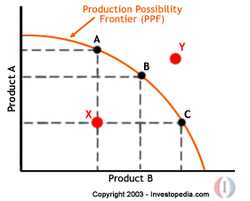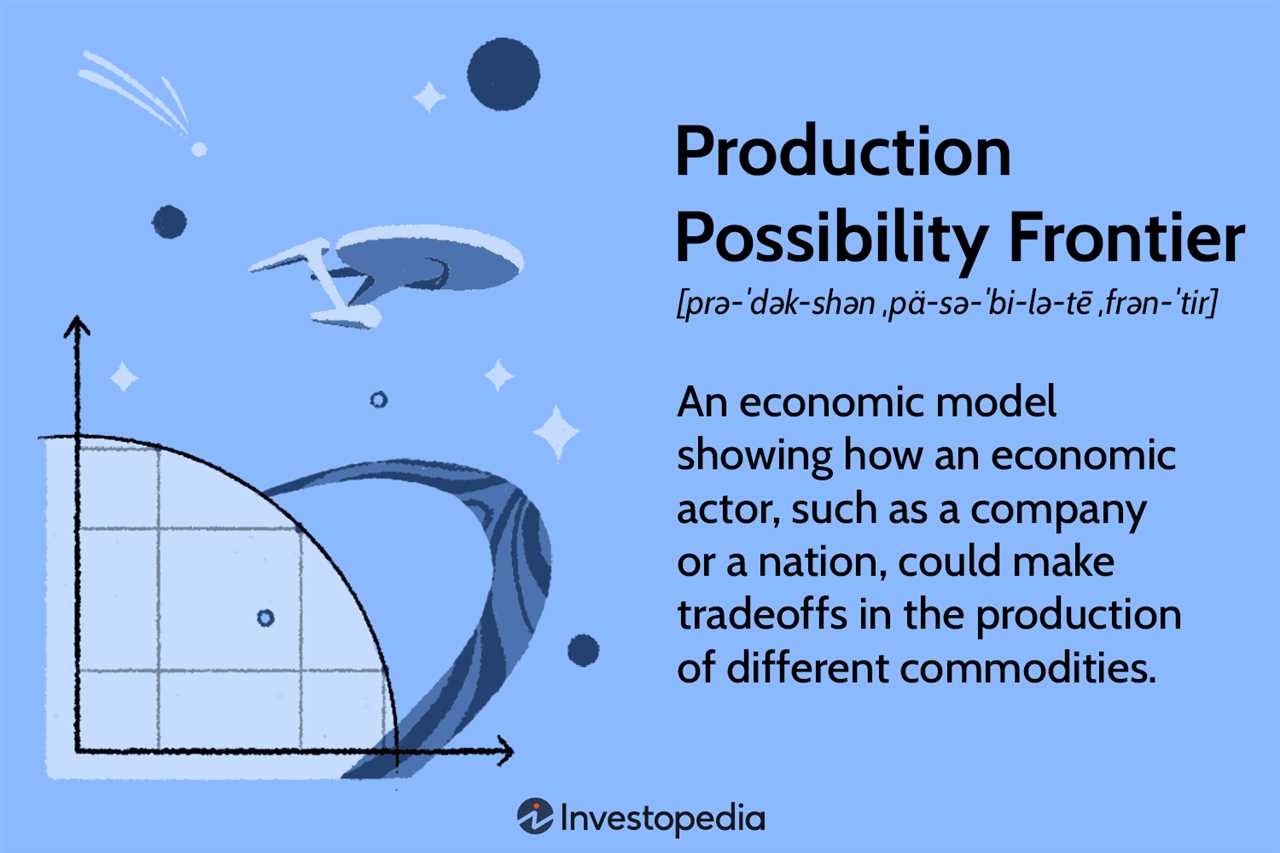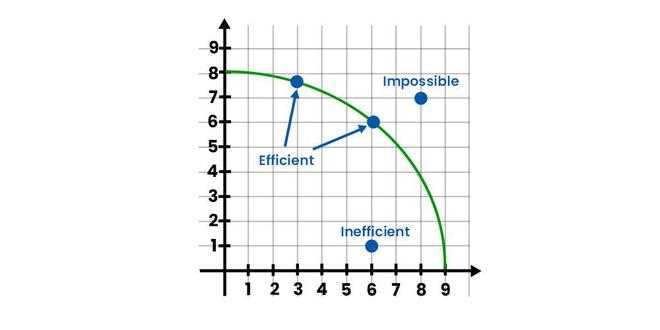Purpose of the Production Possibility Frontier
The production possibility frontier (PPF) is a graphical representation that shows the maximum combination of goods and services that an economy can produce given its resources and technology. The purpose of the PPF is to illustrate the concept of scarcity and the trade-offs that arise from it.
Scarcity refers to the limited availability of resources in relation to unlimited wants and needs. It is a fundamental concept in economics as it forces individuals, businesses, and societies to make choices about how to allocate their scarce resources. The PPF helps to visualize this concept by showing the different combinations of goods and services that can be produced with limited resources.
The PPF is typically represented as a graph with two axes, each representing the quantity of a different good or service that can be produced. The curve of the PPF shows the maximum production levels of one good that can be achieved given the production level of the other good.
Trade-offs and Opportunity Cost
One of the main purposes of the PPF is to demonstrate the concept of trade-offs and opportunity cost. Trade-offs occur when producing more of one good requires sacrificing the production of another good. The PPF shows this trade-off by illustrating the opportunity cost of producing one good in terms of the other good that could have been produced instead.
For example, if an economy is producing at a point on the PPF where it is maximizing the production of consumer goods, any increase in the production of consumer goods would require sacrificing the production of capital goods. The opportunity cost of producing more consumer goods is the loss of potential capital goods that could have been produced.
Economic Efficiency

Another purpose of the PPF is to analyze the economic efficiency of an economy. The PPF shows the maximum production levels that can be achieved given the available resources and technology. Any point on the PPF represents an efficient allocation of resources, as it is not possible to produce more of one good without sacrificing the production of another good.
Points inside the PPF represent inefficient allocations of resources, as it is possible to produce more of one good without sacrificing the production of another good. Points outside the PPF are currently unattainable given the available resources and technology.
By analyzing the PPF, economists can assess whether an economy is operating at its full potential or if there is room for improvement in resource allocation and production levels.
Conclusion
The production possibility frontier serves the purpose of illustrating the concept of scarcity, trade-offs, and economic efficiency. It helps economists and policymakers understand the constraints and choices that arise from limited resources. By analyzing the PPF, they can make informed decisions about resource allocation and economic growth.
Use of the Production Possibility Frontier in Economics
The Production Possibility Frontier (PPF) is a graphical representation of the different combinations of two goods or services that an economy can produce given its limited resources and technology. It is a fundamental concept in economics that helps to analyze and understand the trade-offs and opportunity costs involved in production decisions.
The PPF is used in economics to illustrate the concept of scarcity and the efficient allocation of resources. It shows the maximum possible output that an economy can produce with its available resources and technology. The PPF curve represents the boundary between attainable and unattainable combinations of goods or services, given the constraints of the economy.
The PPF can also be used to analyze the efficiency of an economy’s production. Points on the PPF curve represent efficient allocation of resources, where an economy is producing the maximum output possible given its resources and technology. Points inside the PPF curve represent inefficient allocation of resources, where an economy is not fully utilizing its resources and is producing less than the maximum output. Points outside the PPF curve are unattainable given the current resources and technology.
Furthermore, the PPF can be used to illustrate economic growth and technological advancements. If an economy experiences growth or technological progress, the PPF curve will shift outward, indicating that the economy can produce more of both goods or services. This demonstrates the potential for economic development and improved living standards.
| Benefits of using the Production Possibility Frontier in economics: |
|---|
| 1. Helps to analyze trade-offs and opportunity costs in production decisions. |
| 2. Illustrates the concept of scarcity and efficient resource allocation. |
| 3. Determines the opportunity cost of producing one good in terms of the other. |
| 4. Analyzes the efficiency of an economy’s production. |
| 5. Illustrates economic growth and technological advancements. |
Benefits of Analyzing the Production Possibility Frontier
1. Efficiency

One of the main benefits of analyzing the PPF is that it helps determine the efficiency of an economy. The PPF shows the maximum output that can be produced with the available resources. If an economy is operating on the PPF, it is considered to be producing at its maximum efficiency. Any point inside the PPF represents an inefficient use of resources, while any point outside the PPF is currently unattainable given the available resources.
2. Opportunity Cost
3. Economic Growth
4. Resource Allocation

By analyzing the PPF, economists and policymakers can assess the optimal allocation of resources. The PPF shows the different combinations of goods and services that can be produced, but it does not indicate which combination is the most desirable. By considering factors such as consumer preferences, societal needs, and resource availability, decision-makers can determine the allocation of resources that maximizes societal welfare. The PPF serves as a tool to evaluate different resource allocation options and make informed decisions.

Emily Bibb simplifies finance through bestselling books and articles, bridging complex concepts for everyday understanding. Engaging audiences via social media, she shares insights for financial success. Active in seminars and philanthropy, Bibb aims to create a more financially informed society, driven by her passion for empowering others.
